COVID-19 Simulator
Contents
Simulator
help covid19
Epidemic simulation.
Inspired by Washington Post graphic by Harry Stevens, March 14, 2020.
https://www.washingtonpost.com/graphics/2020/world/corona-simulator/?itid=sf_
These are the four types of individuals.
* Mobile. Susceptible, on the move.
Blue (or green) circle, O.
* Static. Susceptible, stay at home.
Smaller, darker blue circle, o.
* Infected. Infects other susceptible individuals within distance "radius".
Red-orange asterisk, *.
* Immune. Was infected for "duration" steps. No longer infectious.
Darker red x.
These are the seven controllable parameters, with their starting values.
n = 50; population size
infected = .10; initial infected fraction
static = .20; static fraction
radius = .03; infectious distance
duration = 200; time of infection
speed = .03; speed of propagation
barrier = .80; barrier height
The epidemic starts in the upper right quadrant.
The epidemic ends when all infected individuals have become immune.
Folders named covid19
Desktop\covid19
Animation

First frame
The animation begins with 5 infections in the upper right quadrant. There are 45 unaffected.
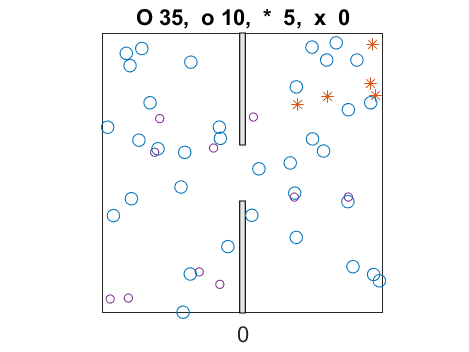
Final frame
The animation ends when there is no more infection. Three individuals have never been infected.
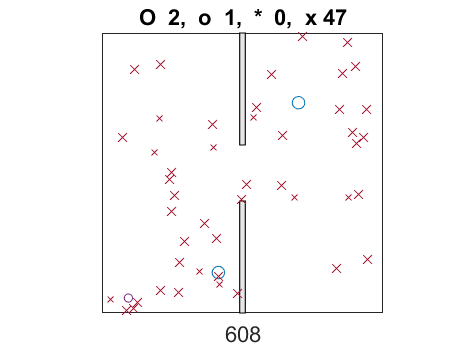
Full barrier
Final frame with complete barrier. Left half is not infected.
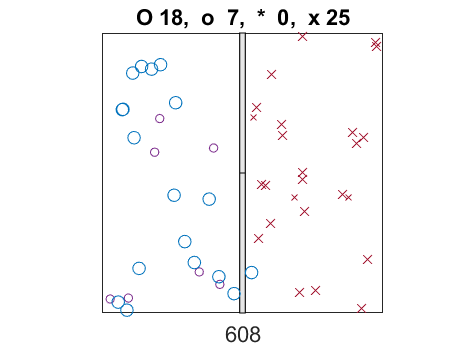
No barrier
One individual is never infected.
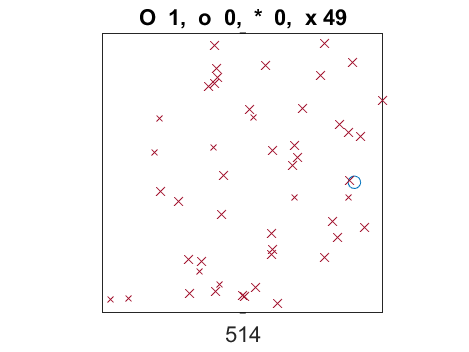
Larger population
Everybody is eventually infected, and in fewer time steps.
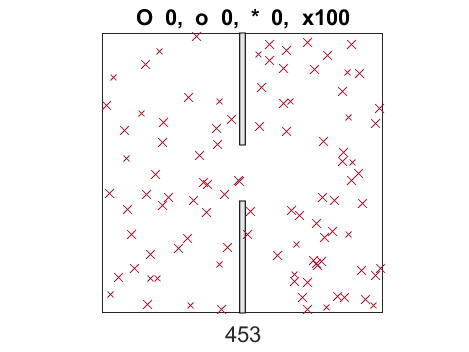
Smaller population
Less infection.

Software
The code is one of the experiments in version 5.0 of Cleve_Lab on the MATLAB Central File Exchange, available here.
The code is on the File Exchange by itself, available here.
- Category:
- Graphs,
- History,
- Simulation
 Cleve’s Corner: Cleve Moler on Mathematics and Computing
Cleve’s Corner: Cleve Moler on Mathematics and Computing The MATLAB Blog
The MATLAB Blog Guy on Simulink
Guy on Simulink MATLAB Community
MATLAB Community Artificial Intelligence
Artificial Intelligence Developer Zone
Developer Zone Stuart’s MATLAB Videos
Stuart’s MATLAB Videos Behind the Headlines
Behind the Headlines File Exchange Pick of the Week
File Exchange Pick of the Week Hans on IoT
Hans on IoT Student Lounge
Student Lounge MATLAB ユーザーコミュニティー
MATLAB ユーザーコミュニティー Startups, Accelerators, & Entrepreneurs
Startups, Accelerators, & Entrepreneurs Autonomous Systems
Autonomous Systems Quantitative Finance
Quantitative Finance MATLAB Graphics and App Building
MATLAB Graphics and App Building








Comments
To leave a comment, please click here to sign in to your MathWorks Account or create a new one.